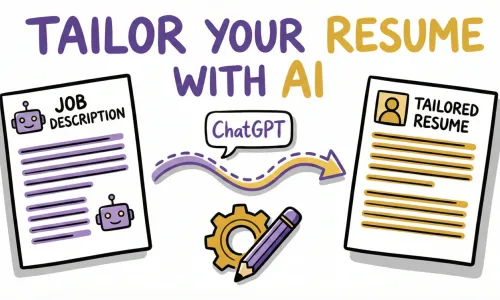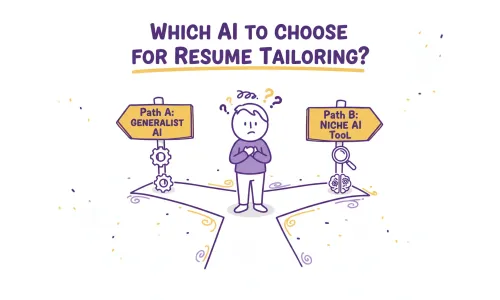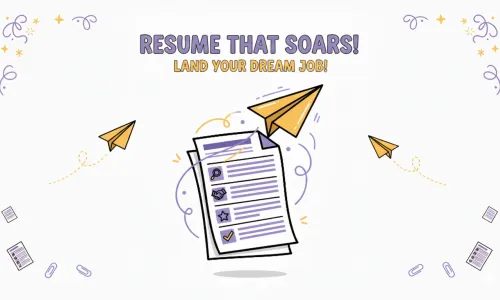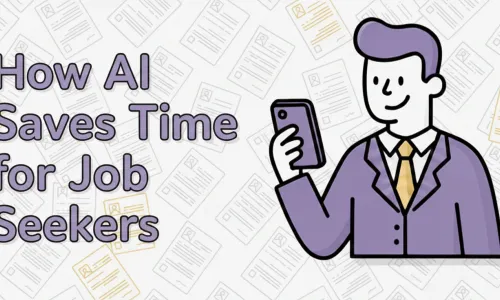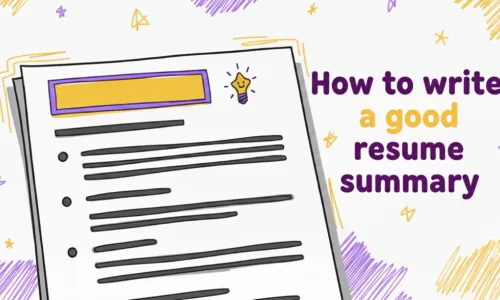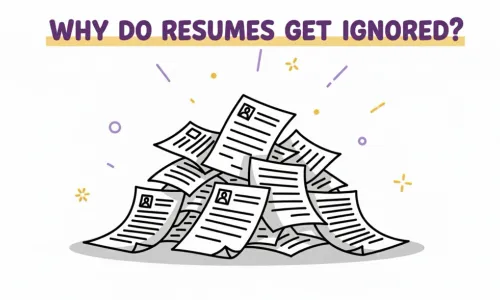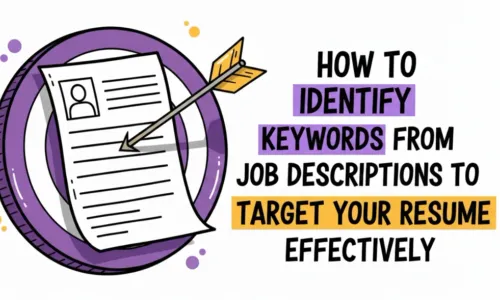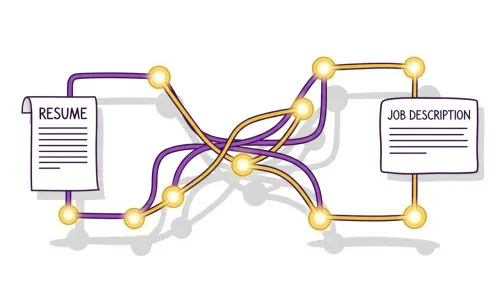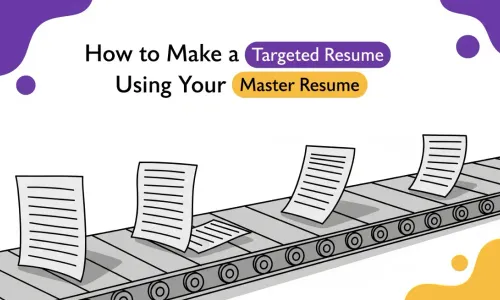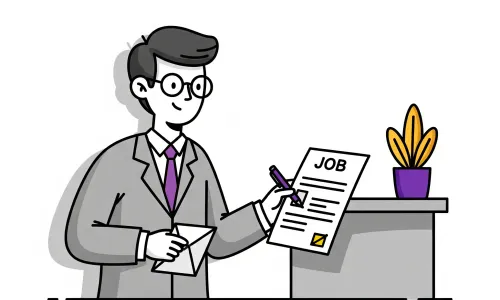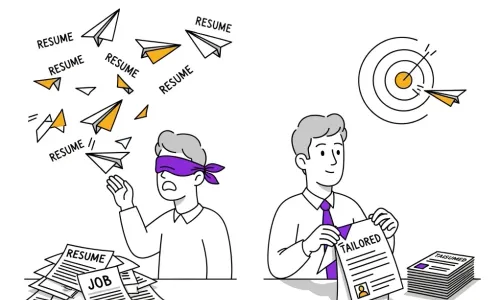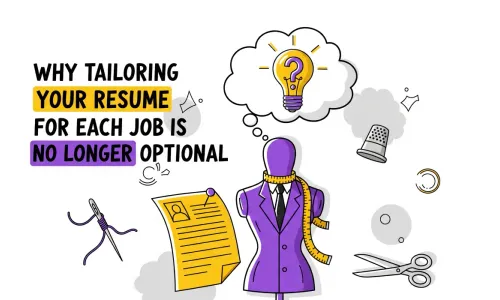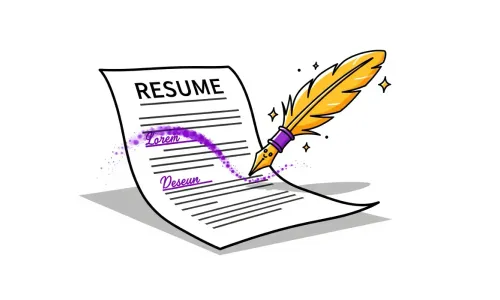Why Your Generic Resume Isn't Working
Is this scenario familiar? You’ve spent hours polishing your resume, sent it out to dozens of job postings, and then… silence. It’s a frustrating experience that leaves many job seekers feeling defeated. But what if the problem isn’t your experience, but your approach?
In today’s competitive job market, a one-size-fits-all resume is no longer effective. The secret to getting noticed by recruiters and landing more interviews is the targeted resume.
A targeted resume is a version of your resume that has been specifically tailored to match the requirements of a particular job description. It’s a strategic approach that involves highlighting your most relevant skills and experience, using the right keywords to pass through Applicant Tracking Systems (ATS), and demonstrating to the employer that you are the perfect fit for the role. For a deep dive on how to tailor your resume to any job description, check out our other blog post.
This guide will walk you through everything you need to know about creating a powerful targeted resume that gets results. We’ll cover what a targeted resume is, why it’s so important, and a step-by-step process you can follow to write one that presents you as a qualified candidate and opens doors to your dream job.
What is a Targeted Resume and Why Do You Need One?
Defining the Targeted Resume
A targeted resume is a customized version of your resume that is specifically tailored to a single job opening. Instead of sending the same generic document to every employer, you modify it to highlight the skills and experiences most relevant to that particular role. Think of it as a custom-made suit versus one off the rack. The custom suit is designed to fit you perfectly, accentuating your best features, while the off-the-rack suit is made for a general audience and may not fit you well at all. A targeted resume is that custom-made suit, designed to make you look like the ideal candidate.
The Role of Applicant Tracking Systems (ATS)
One of the biggest hurdles your resume needs to overcome is the Applicant Tracking System (ATS). Most companies use ATS software to scan and filter resumes before they ever reach a human. This software looks for specific keywords and phrases that match the job description. If your resume doesn’t contain the right keywords, it will likely be rejected before a hiring manager ever sees it. A targeted resume is your best defense against the ATS. By strategically including keywords from the job posting, you can significantly increase your chances of making it through the initial screening and into the hands of a real person.
Benefits of a Targeted Resume
Creating a targeted resume takes more effort than sending out a generic one, but the benefits are well worth it:
- Gets You Past the ATS: As mentioned, a targeted resume is optimized to pass through applicant tracking systems.
- Shows Genuine Interest: It demonstrates to the employer that you’ve taken the time to read their job description carefully and are genuinely interested in the role, making you a better fit for the role.
- Highlights Your Most Relevant Skills: It allows you to showcase the skills and experiences that are most important for the specific job you’re applying for.
- Increases Your Chances of Getting an Interview: A targeted resume makes you a more compelling candidate, which significantly increases your chances of being invited for an interview.
How to Write a Targeted Resume in 5 Actionable Steps
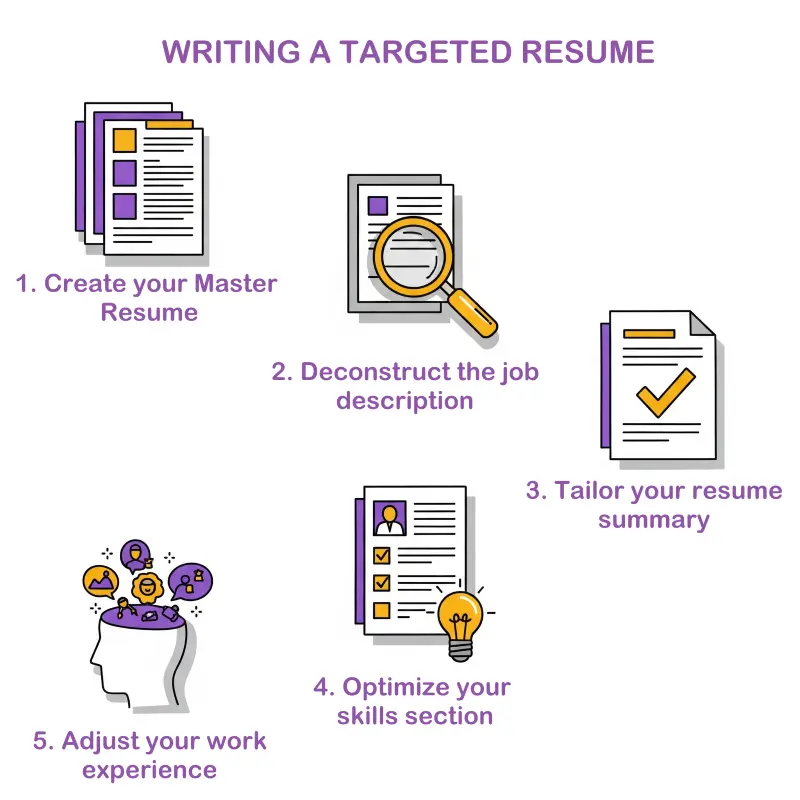
Step 1: Start with a Master Resume
Before you can start creating targeted resumes, you need a master resume. A master resume is a comprehensive document that includes all of your work experience, skills, accomplishments, education, and certifications. It’s your personal career repository. This document is for your eyes only and can be as long as you need it to be. The goal is to have all of your professional history in one place, so you can easily pull the most relevant information when you’re tailoring your resume for a specific job. Don’t worry about formatting or length at this stage; just focus on getting everything down on paper.
Step 2: Deconstruct the Job Description
The job description is your cheat sheet for writing a targeted resume. Print it out, open it in a document, or use a note-taking app, and start highlighting the key information. Look for:
- Keywords: Pay close attention to the specific words and phrases the employer uses to describe the role, responsibilities, and qualifications. These are the keywords you’ll want to mirror in your resume.
- Required Skills: Make a list of the “must-have” skills, both hard (technical) and soft (interpersonal). These are non-negotiable, so you need to make sure you highlight them if you have them.
- Qualifications: Note the required education, certifications, and years of experience. The closer you match these, the better.
- Company Culture: Read between the lines to get a sense of the company’s values and culture. Are they collaborative or independent? Fast-paced or methodical? This can help you tailor the tone of your resume.
Step 3: Tailor Your Resume Summary
Your resume summary (also known as a professional summary) is a 2-3 sentence snapshot of your career that sits at the top of your resume. It’s your elevator pitch, and it’s often the first thing a recruiter reads. For a targeted resume, you need to customize this section to align with the specific job you’re applying for.
Generic Summary Example:
“Highly motivated and results-oriented marketing professional with 5+ years of experience in digital marketing. Seeking to leverage my skills in a challenging new role.”
This is vague and could apply to almost any marketing job. Now, let’s look at a targeted version for a “Social Media Marketing Manager” role:
Targeted Summary Example:
“Results-driven Social Media Marketing Manager with over 5 years of experience developing and executing successful social media strategies that have increased engagement by 150% and driven over $500,000 in revenue. Seeking to leverage my expertise in content creation, community management, and paid advertising to grow the online presence of XYZ Company.”
See the difference? The targeted summary is specific, uses keywords from the job description (e.g., “Social Media Marketing Manager,” “content creation,” “community management”), and includes quantifiable achievements.
Step 4: Optimize Your Skills Section
Your skills section is another opportunity to pack your resume with relevant keywords. Create a dedicated section for your skills and organize it into categories, such as “Technical Skills,” “Soft Skills,” and “Certifications.”
- Prioritize Skills Mentioned in the Job Description: Pull the most important skills from the job description and list them in your skills section. Use the exact wording from the job posting to ensure you get past the ATS.
- Include a Mix of Hard and Soft Skills: Hard skills are teachable abilities like “Python” or “Google Analytics.” Soft skills are interpersonal qualities like “communication” or “teamwork.” A good resume has a healthy balance of both.
- Be Honest: Only include skills that you genuinely possess. It’s better to be honest about your abilities than to get caught in a lie during an interview.
Step 5: Customize Your Work Experience Section
Your work experience section is where you provide the evidence to back up the claims you made in your summary. For each job you list, you need to tailor the bullet points to showcase the accomplishments that are most relevant to the job you’re applying for. Here’s how:
- Focus on Accomplishments, Not Just Responsibilities: Instead of simply listing your duties, focus on what you achieved. Use the STAR method (Situation, Task, Action, Result) to frame your bullet points.
- Use Action Verbs and Quantifiable Data: Start each bullet point with a strong action verb (e.g., “managed,” “created,” “implemented”) and include numbers to quantify your impact wherever possible. For example, instead of saying “Managed social media accounts,” you could say, “Managed 5 social media accounts, growing our following by 25% in 6 months.”
- Mirror the Language of the Job Description: If the job description asks for experience in “email marketing campaigns,” make sure you use that exact phrase in your resume (assuming you have that experience).
Targeted Resume Examples: Before and After
Transforming a generic resume into a targeted resume can drastically improve your chances of landing an interview. Below are two real-world examples showing exactly how small but strategic changes can make your resume speak directly to an employer’s needs.
Targeted Resume Example: Project Manager
Generic Resume
Summary: Experienced project manager with a track record of success. Skilled in leading teams and managing projects from start to finish.
Work Experience:
- Managed project timelines and budgets.
Targeted Resume
(Targeting a job that requires Agile methodologies and Jira experience)
Summary: Agile-certified Project Manager with 7+ years of experience leading cross-functional teams to deliver complex software projects on time and under budget. Proven expertise in Scrum, Kanban, and Jira to optimize workflows and enhance team productivity.
Work Experience:
- Managed project timelines and budgets using Jira, resulting in a 15% reduction in project costs.
Targeted Resume Example: Data Scientist
Generic Resume
Summary: Data scientist with experience in data analysis, machine learning, and statistical modeling.
Work Experience:
- Analyzed datasets to support business decisions.
Targeted Resume
(Targeting a job requiring Python, SQL, and customer churn prediction)
Summary: Data Scientist with 5+ years specializing in predictive modeling and data-driven insights. Expert in Python, SQL, and machine learning techniques to reduce customer churn and increase retention.
Work Experience:
- Developed a customer churn prediction model using Python and SQL, improving retention rates by 12%.
By making these small but significant adjustments, the targeted resumes highlight relevant skills, tools, and measurable results — exactly what hiring managers and Applicant Tracking Systems (ATS) are looking for.
Common Mistakes to Avoid When Writing a Targeted Resume
As you create your targeted resume, be mindful of these common mistakes:
- Sending the Same Resume Everywhere: This is the cardinal sin of job searching. Always tailor your resume for each specific application.
- Keyword Stuffing: While it’s important to use keywords, don’t overdo it. Your resume should still be readable and make sense to a human. Weave keywords in naturally, don’t just list them.
- Lying or Exaggerating: Never claim to have skills or experience that you don’t. It’s a surefire way to get caught and ruin your professional reputation.
- Ignoring Company Culture: Your resume should not only reflect the requirements of the job but also the values of the company. A little research can go a long way.
- Forgetting to Proofread: Typos and grammatical errors can make you look unprofessional. Always proofread your resume carefully before sending it.
Don't Forget the Cover Letter!
Your targeted resume should always be accompanied by a targeted cover letter. A cover letter is your opportunity to tell a story and connect with the hiring manager on a more personal level. Here are a few tips for writing a targeted cover letter:
- Address the hiring manager by name: Avoid generic salutations like “To Whom It May Concern.”
- Mirror the language of the job description: Just like with your resume, use keywords from the job posting to show that you’re a good fit.
- Highlight your most relevant accomplishments: Pick 2-3 of your most impressive achievements from your resume and elaborate on them in your cover letter.
- Show your personality: Let your passion and enthusiasm for the role shine through.
The Smarter Way to Create a Targeted Resume
Creating a targeted resume for every job application is a powerful strategy, but it can also be incredibly time-consuming. If you’re applying to multiple jobs a week, the hours spent tailoring your resume can really add up.
That’s where Reztune comes in. Our AI-powered resume builder takes the guesswork and the grunt work out of writing a targeted resume. With Reztune, you can:
- Instantly Tailor Your Resume: Simply upload your resume and paste in a job description, and our AI will automatically rewrite your resume to match the job’s requirements.
- Optimize for ATS: We analyze the job description and strategically insert the right keywords to ensure your resume gets past the applicant tracking systems.
- Choose from Professional Templates: Select from a library of ATS-friendly templates that are designed to impress recruiters.
Ready to stop spending hours tailoring your resume and start landing more interviews? Try Reztune for free today!
Frequently Asked Questions (FAQ)
What is the difference between a resume and a targeted resume?
A standard resume is a general overview of your career, while a targeted resume is customized to a specific job, highlighting relevant skills and experience.
How do I know what keywords to use in my resume?
Analyze the job description for recurring words and phrases related to skills and qualifications. These are your keywords.
Is it okay to have a 2-page targeted resume?
For experienced professionals, a two-page resume is acceptable, as long as the content is relevant and compelling.
How often should I update my master resume?
Update your master resume every few months or whenever you acquire a new skill or complete a significant project.
How can I write a targeted resume if I'm making a career change?
When making a career change, focus on your transferable skills. In your resume summary, highlight your relevant skills and how they can be applied to the new industry. Emphasize any volunteer work or personal projects that are relevant to the new role.
What's the best way to showcase both hard and soft skills on my resume?
Create a dedicated skills section with subheadings for "Hard Skills" and "Soft Skills." You can also demonstrate your soft skills in the descriptions of your work experience. For example, instead of saying you have "leadership skills," describe a project you led and the positive outcome.
Why is it important to use quantifiable data in my resume?
Using quantifiable data (e.g., numbers, percentages, dollar amounts) provides concrete evidence of your accomplishments. It shows the employer the real-world impact you've had in your previous roles and helps you stand out from other candidates.
How can a targeted resume help me land my dream job?
A targeted resume shows the employer that you are the perfect candidate for their specific needs. By taking the time to customize your resume, you demonstrate a strong interest in the company and the role, which can significantly increase your chances of landing an interview for your dream job.
Your Resume is Your Most Powerful Tool
In today’s competitive job market, a targeted resume is no longer optional — it’s essential. By taking the time to tailor your resume to each specific job, you can dramatically increase your chances of getting noticed by recruiters and landing the interviews you deserve. Remember, your resume is your most powerful tool in your job hunt. Use it strategically, and you’ll be well on your way to finding your dream job.


